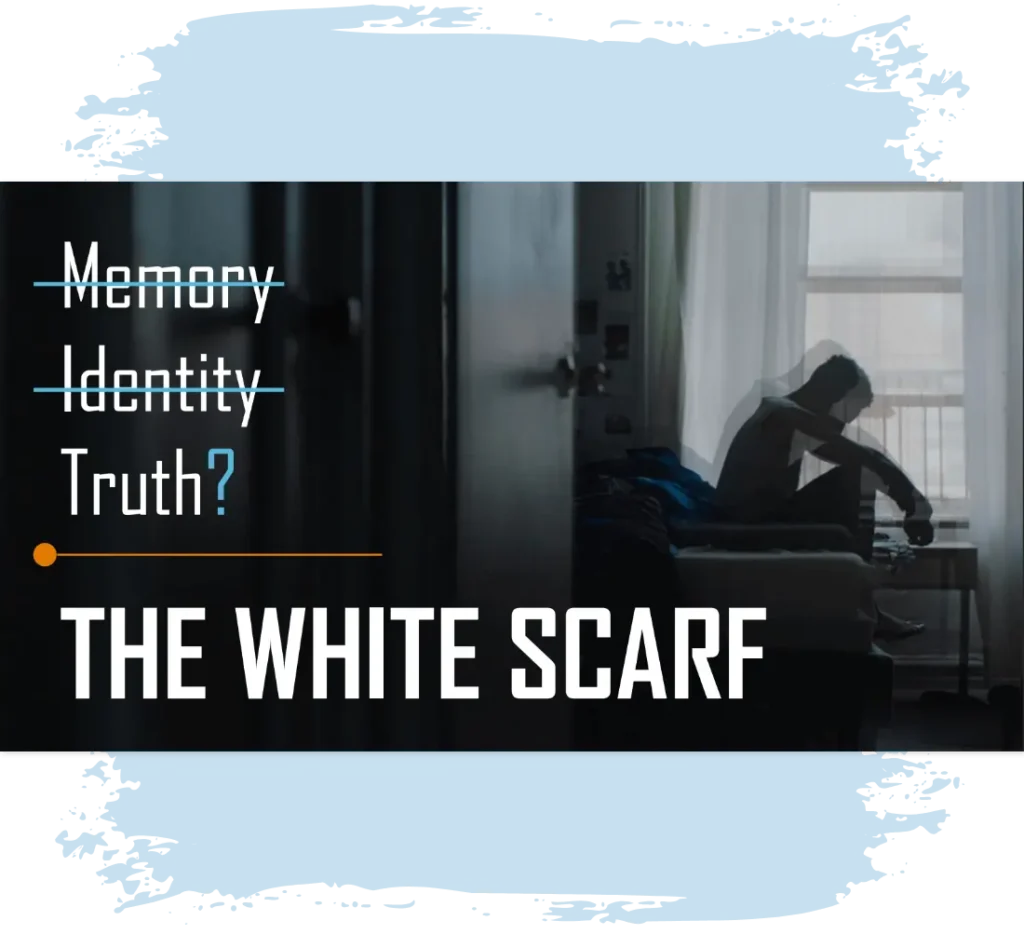What is The White Scarf and how did it come to be?
The White Scarf is a 15‑minute psychological drama that places viewers inside the disorientation of early‑onset dementia. The story follows iconic film star Ian St. James—an Oscar‑nominated actor, director, and producer—whose cognition is fragmenting, and his husband‑caregiver, Lucas Santiago, who fights to hold their shared life together.
After 10 years as a hospice chaplain, I saw the emotional texture of memory loss up close. Conversations with LGBTQ+ elders highlighted a second, quieter struggle: the legal and social invisibility that can shadow same‑sex partners in end‑of‑life care. Those encounters shaped both the script and its advocacy goals.
The film does not explain dementia; the film translates its felt experience. Centering on a queer couple broadens representation and argues—without sermonizing—for equal dignity in elder care. I want clinicians, caregivers, and general audiences to leave with a visceral sense of what’s at stake when memory fades but love endures.

Who initially inspired you to grapple with dementia?
Several themes that recurred in my life inspired me to make dementia the topic of this particular work.
Consent versus care: While visiting a close friend, I watched her father—receiving excellent clinical support—interpret bathing, medication, and feeding attempts as abuse. His sense of autonomy was intact even as memory failed; what looked like compassionate care from the outside landed as repeated violation to him. That tension shaped how we stage every caregiving beat in the film: Whose perception defines “help”?
Spatial disorientation: My mother once woke and reported that “the house is backwards.” Rooms she had moved through for decades no longer mapped to her internal model; she was frightened and immobile.
Legal and social erasure: A longtime friend lost his partner of 30 years. Within weeks, family members contested the will and he was pushed out of the home they shared. That fragility—particularly acute for queer couples—underscores the stakes for Lucas in The White Scarf: love is durable; legal standing is not.

How has working on dementia-related art changed you?
Years at the bedside as a hospice chaplain taught me that dementia turns epic lives into micro‑gestures: a hand hesitating on a familiar switch, a caregiver exhaling before the 10th repetition. That discipline of noticing shapes my directing—long, quiet takes where presence eclipses plot.

Dementia also redefines aging for me: not slow erasure but a nonlinear remix where memories shuffle and what endures is touch, tone, ritual, love. The White Scarf channels that insight, centering a queer couple whose lifelong fight for visibility collides with cognitive collapse. Across my work of 2 other projects—whether the supernatural grief of Casa de Hospicio or the trauma portrait in Clown—I explore identity under siege and the politics of care. The White Scarf zooms closest, inviting audiences to sit with fragility and, by holding the gaze, honor its dignity.
How has The White Scarf been received?
The Monthly World Film Festival of Cannes has nominated The White Scarf as the best Drama Script for the month of June 2025.
This work is dedicated to: the LGBTQ+ struggling with dementia.











